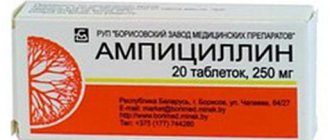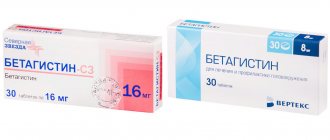Meningitis is an inflammatory process around the soft membranes of the spinal cord and brain. The causative agents can be viruses and bacteria that lead to the development of such a disease. Treatment with antibiotics is the main method that will help not only eliminate the cause of the disease, but save the patient’s life.
Meningitis is an acute infectious disease that requires emergency medical attention. The disease can be primary or secondary. In the primary stage, the brain is immediately affected. The secondary stage develops after the pathogen enters from other foci.
Ceftriaxone and meningitis: how the antibiotic works for the disease
Ceftriaxone for meningitis destroys bacteria that cause inflammation of the membranes of the brain and spinal cord:
- pneumococci,
- streptococci,
- meningococci,
- enterobacteria,
- staphylococci,
- Haemophilus influenzae.
This helps relieve the main signs of the disease:
- normalize body temperature;
- restore heart function and breathing;
- relieve tension in the muscles of the torso and limbs;
- reduce nausea and vomiting;
- relieve headaches.
Timely treatment with the drug prevents complications:
- convulsions;
- paralysis (immobility) of the limbs;
- visual and hearing impairments;
- mental disorders;
- involuntary emptying of the bladder and bowels.
We recommend reading about how to use Ceftriaxone for sinusitis. From the article you will learn why Ceftriaxone is prescribed for sinusitis, sinusitis and other ENT diseases, as well as how to properly inject the antibiotic and what to do if it does not help. And here is more information about how to take Ceftriaxone for bronchitis.
A little about the drug
Ceftriaxone is a 3rd generation cephalosporin antibiotic. It has a broad antimicrobial spectrum of action and inhibits the formation of bacterial membranes. Microbes that are resistant to penicillins and other antibacterial agents are often sensitive to it.
For the treatment of meningitis, it is important that this drug has the ability to penetrate well through the barrier between the blood and brain tissue (blood-brain). After administration of the drug into a vein, approximately 17% passes through non-inflamed membranes, and with bacterial meningitis this amount increases 4 times.
The concentration of the drug reaches its maximum already on the first day of use. It is several times higher than what is necessary to stop the growth and reproduction of most bacteria that cause meningitis. The advantages of this antibiotic also include:
- relatively low toxicity;
- possibility of administering large doses in 2 times;
- You can give injections intramuscularly and intravenously (in injections and droppers).
What is important for a patient to know about the disease?
Meningitis can be a complication of sinusitis (inflammation of the paranasal sinuses), otitis (infection in the middle ear) and advanced caries. The second route of entry for bacteria is through open trauma to the skull.
Microbes lead to an inflammatory reaction and swelling of brain tissue. Since the medulla is located in a limited bone space, compression occurs on the centers that regulate movement, heart function, vascular tone, and breathing.
If you do not consult a doctor in time, an extensive purulent process with increased intracranial pressure, convulsions, visual and hearing impairment is possible. Meningococcal infection can cause severe meningoencephalitis with a fatal outcome. With an untreated disease, patients suffer from persistent headaches for a long time.
General information
Bacterial meningitis or meningococcal infection is considered an insidious and serious disease and requires urgent medical attention and medication. Meningitis can be caused by bacteria and viruses.
Amoebic meningitis almost always ends in the death of the patient. It is a serious and rare pathology. This type of meningitis is caused by an amoeba that lives in thermal ponds. It can enter the human body through the nose when immersed in water. Meningitis of the brain is an insidious infectious disease that is fraught with the development of serious complications in other human organs and systems.
The most common form is viral meningitis. It is not fatal, but significantly reduces human immunity. The virus is transmitted by airborne droplets when sneezing or coughing, also through sewers and poor personal hygiene. Quite often in the autumn-winter period, viral meningitis is diagnosed, the symptoms of which may appear the next day after the virus enters the human body.
Contraindications to Ceftriaxone for meningitis
It is forbidden to administer Ceftriaxone in case of meningitis and intolerance to the drug or any of the cephalosporin antibiotics, penicillins, carbapenems (for example, Meronem). Constant monitoring of liver and kidney function is required, as their function may deteriorate.
For newborns, the following are considered contraindications:
- severe prematurity;
- jaundice;
- increased bilirubin;
- blood acidification (acidosis);
- decreased protein levels;
- the need for the introduction of calcium salts.
Jaundice in a newborn
How is Ceftriaxone used for meningitis in adults?
The use of Ceftriaxone in adults for meningitis begins immediately after diagnosis, without waiting for culture results. Used:
- maximum daily dose – 4 g;
- intravenous route of administration - an injection with 10 ml of saline or in a dropper with 40 ml of 5% glucose, 6% Voluven, 0.9% sodium chloride;
- two injections strictly with breaks of 12 hours.
Intramuscular injections are done much less frequently; for one you need to take 1 g of antibiotic powder and 4 ml of 1% Lidocaine (you can take 2 ml of water for injection and 2% Lidocaine). Two injections are administered at a time, but always in different buttocks. After 12 hours, the manipulations are repeated (2 times a day, 2 g).
The course of treatment depends on the identified causative agent of inflammation:
- meningococcus – 5-7 days;
- hemophilus influenzae – 7-10 days;
- pneumococcal – 10 days;
- from 2 weeks if the origin of the infection is unknown;
- 3 weeks if low immunity, gram-negative or mixed flora is detected.
To stop administering the drug, cerebrospinal fluid is taken for analysis. The number of cells in it should decrease. They also pay attention to the normalization of temperature and the disappearance of general and cerebral symptoms.
Symptoms
If meningitis is suspected, the patient must be immediately transported to the hospital. It is not always possible to diagnose a disease quickly. Symptoms of meningitis resemble the development of a flu-like condition. The period of development of the disease takes from 2 to 10 days. Symptoms may not appear fully, it all depends on the severity of the disease and the individual characteristics of the patient. The characteristic symptoms of meningococcal infection are:
- The patient's temperature increases;
- Fever appears;
- Severe and persistent headache;
- Fear of light;
- The patient is unable to reach his neck with his chin;
- Intoxication develops;
- The patient constantly wants to sleep;
- Pain appears in the joints and muscles;
- Rashes on the skin in the form of bright purple spots.
How meningitis manifests itself in adults and what symptoms are characteristic of this disease can be found and read on the pages of this article.
It must be remembered that the disease is accompanied by other signs, which can lead to an erroneous diagnosis and cost the patient his life.
In a matter of hours, meningitis can be fatal for the patient if treatment with antibacterial therapy is not started immediately.
The disease can also be complicated by various neurological and mental disorders, which require additional monitoring and treatment.
Dosage, course and precautions for Ceftriaxone for meningitis in children
Ceftriaxone for bacterial meningitis in children is administered in the following dosages:
- from birth to 2 weeks – 50 mg/kg body weight;
- from 2 weeks to a year – 80 mg/kg (sometimes up to 100 mg/kg);
- from one year onwards – 100 mg/kg;
- with a weight of 40 kg – 4 g (maximum daily).
For children, the causative agent of the infection and its sensitivity to Ceftriaxone must be determined. After this, you can reduce the dosage. Course of treatment for a child upon detection:
- meningococcus – 4-5 days;
- hemophilus influenzae – 6 days;
- pneumococci – 7 days;
- enterobacteria – 10-14 days.
In order to reduce the risk of side effects in a child, it is necessary:
- carry out treatment only in a hospital to monitor the state of the nervous system, the functioning of the kidneys, liver, intestines, blood picture;
- drink enough liquid to prevent the formation of salts;
- food should be easily digestible and gentle;
- the drug is injected into a vein (usually an IV is placed);
- after 7 days of administration of Ceftriaxone, prevention of fungal infection and intestinal dysbiosis is carried out.
Complications from the use of Ceftriaxone
With meningitis, complications when administering an antibiotic are more common, since maximum doses of the drug are used. Adverse reactions may include:
- diarrhea, abdominal pain;
- dysbacteriosis with the proliferation of clostridia (pseudomembranous colitis);
- nausea, vomiting;
- thrush in the oral cavity and genital mucosa;
- blood clotting disorders and other changes in tests: decrease in leukocytes, increase in liver enzymes and nitrogenous substances (due to deterioration of the liver and kidneys), destruction of red blood cells;
- bile stagnation;
- skin rashes, swelling, urticaria.
What else is used to treat meningitis?
Before determining the pathogen and sensitivity to antibiotics, the following drugs can be used:
- children under 1 month - Ampicillin + Cefotaxime (possibly with Gentamicin);
- from a month to a year - Cefepime, Meropenem;
- from one year to 18 and older - Vancomycin, Gentamicin, Cefotaxime.
The treatment package includes:
- solutions – Reopoliglyukin, Voluven, Gemodez-N, Refortan;
- protein preparations – Albumin, Infezol;
- fresh frozen plasma;
- means for relieving cerebral edema - Mannitol, Lasix;
- anticonvulsants – Sodium hydroxybutyrate, sodium thiopental;
- improving the functioning of brain cells - Piracetam, Mexiprim.
We recommend reading about how to use Ceftriaxone for pneumonia. From the article you will learn how antibiotics work for pneumonia, treatment regimens in adults, and duration of therapy. And here is more information about how to use Ceftriaxone for sore throat.
Ceftriaxone for meningitis is considered the antibiotic of first choice and is prescribed in the maximum dose. Used for children from birth and for adults, administered only under the supervision of a doctor in a hospital setting.
Difficulties of treatment
The outcome of the disease directly depends on the adequacy and timeliness of therapy.
This is impossible to achieve when treating pathology at home, since therapy is carried out in a hospital. Treatment presents certain difficulties, since some strains of pneumococcus, leading to the development of pathology, are resistant to antibiotics.










